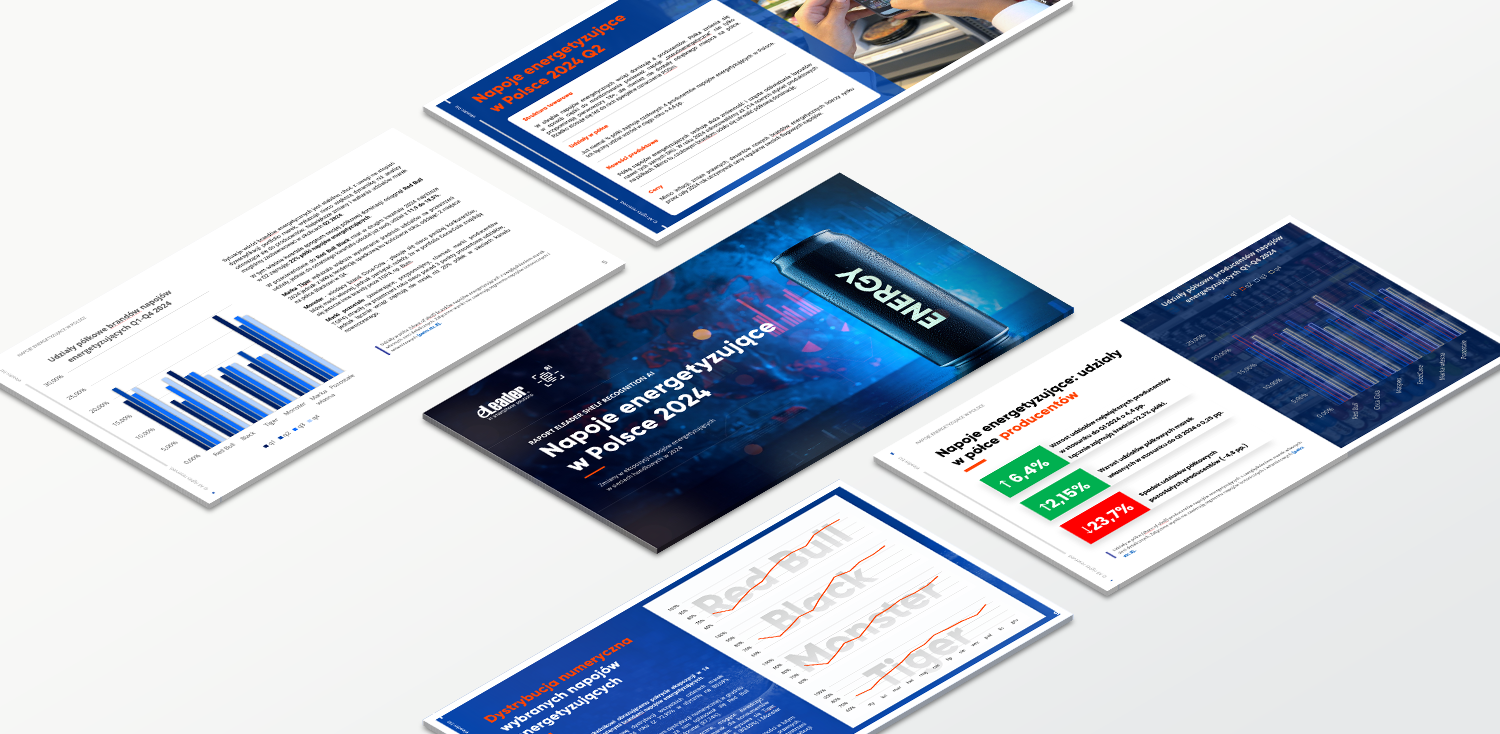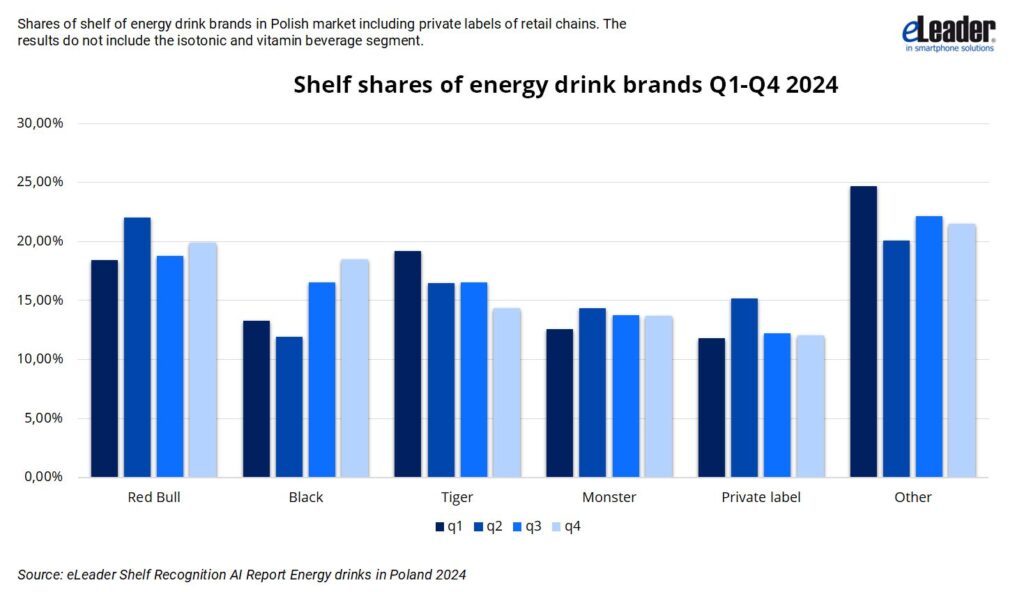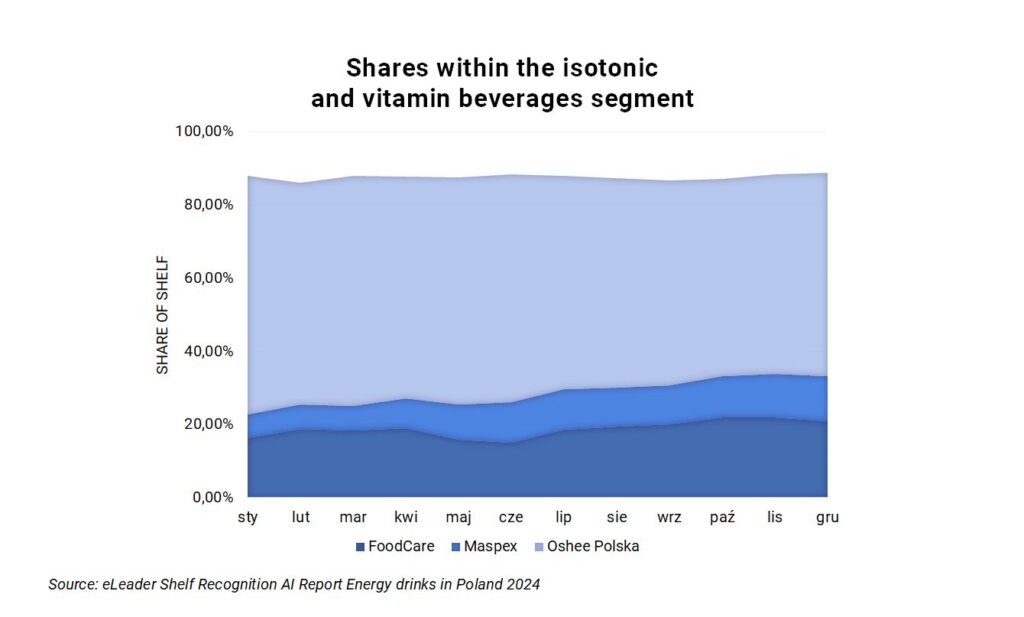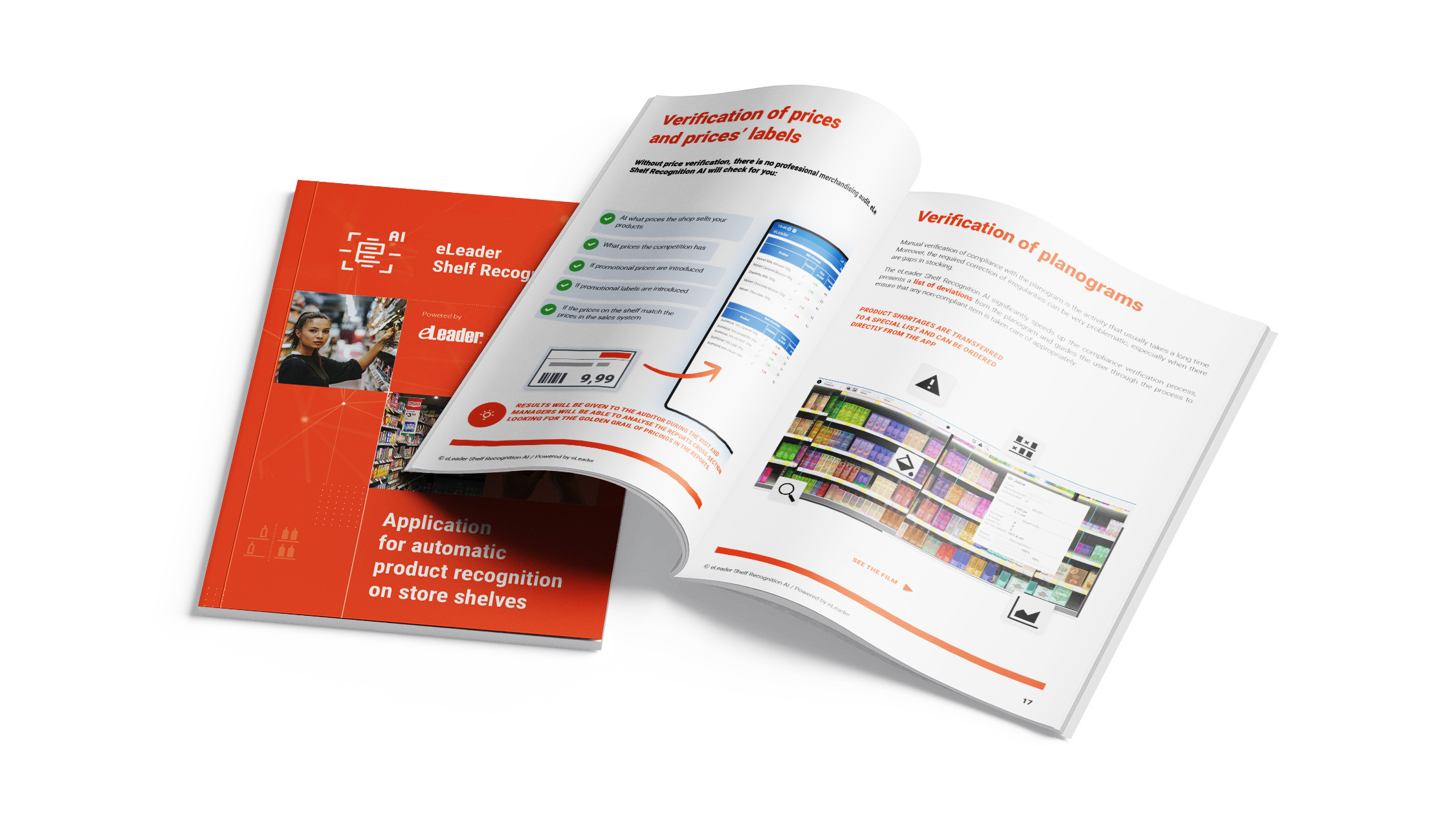
Energy drinks 2024: industry view through the lens of AI
Since the beginning of 2024, a ban on selling energy drinks to minors has been in effect in Poland. We...
Since the beginning of 2024, a ban on selling energy drinks to minors has been in effect in Poland. We found it interesting to examine whether and how this legal change would impact the display of this product category. Initially, there was significant uncertainty within the industry. Manufacturers, distributors, and store managers feared the loss of a large consumer group and a decline in sales. These concerns were reflected in the noticeably reduced visibility of energy drinks on store shelves.
However, the following months of 2024 brought interesting developments in this market. The latest eLeader report shows that the industry quickly adapted to the new regulations and, despite unfavorable economic conditions, managed to avoid a crisis. What else did our research reveal?
Energy Drinks Are Thriving on Shelves
Despite initial concerns, the energy drinks market in Poland didn’t just hold its ground – it grew.
Our analysis, based on eLeader Shelf Recognition AI data from 14 retail channels nationwide, tracks how the category evolved throughout 2024. The first quarter saw a dip in shelf visibility, but by the end of Q1, the trend had reversed. What followed was a steady upward trajectory, with major producers expanding their shelf share and top brands solidifying their dominance.
Notably, 214 new energy drink products and variants appeared on store shelves, signalling a surge in market competition. Yet, the category remains dominated by four key players – Red Bull, Black, Tiger, and Monster – which together command nearly three-quarters of total shelf space. Their continued presence underscores the power of brand recognition and consumer loyalty in this fast-moving sector.

Prices Hold Firm Despite Inflation
One of the most intriguing findings in our report is the surprising stability of energy drink prices. Despite rising inflation and increasing costs across the FMCG sector, market leaders have opted to maintain their pricing. At first glance, this may seem counterintuitive, but a deeper look at the data reveals a strategic decision. The energy drink market is highly dynamic and sensitive to emerging trends, with new brands backed by celebrities and influencers regularly entering the scene. In such an environment, price stability can serve as a competitive advantage, helping established brands maintain consumer loyalty amidst growing competition.
Rising New Players and Shifting Trends
Beyond energy drinks, our report also covers vitamin and isotonic beverages. Oshee Poland remains the dominant force in this category, holding the largest share of shelf exposure. However, challengers like FoodCare and Maspex are quickly gaining ground, steadily increasing their presence. A notable trend in this segment is the rise of “pseudo-energy” drinks – products with lower caffeine and taurine content, making them eligible for sale to minors.
Despite accounting for about 7% of total energy drink sales, these beverages are rarely placed on separate shelves or distinctly labeled. Instead, consumers must rely on reading the packaging, suggesting a subtle strategy to maintain existing purchasing habits.

Key Takeaways: The Strategic Value of Shelf Insights
The store shelf is the final battleground where manufacturers can influence consumer purchasing decisions. Insights from the latest report, powered by eLeader Shelf Recognition AI, reveal that energy drink manufacturers understand this well. Despite initial concerns, the restriction on sales to minors did not lead to reduced shelf presence or distribution. Instead, major brands maintained or even expanded their visibility, with prices remaining stable. This resilience was largely driven by product diversification and alignment with market trends.
The findings underscore the critical role of systematic display analysis in sustaining high sales. By leveraging AI-powered tools like eLeader Shelf Recognition AI, which accurately recognizes products in real shelf images through deep learning, brands can gain precise data to refine their display strategies and stay ahead in a competitive market.


